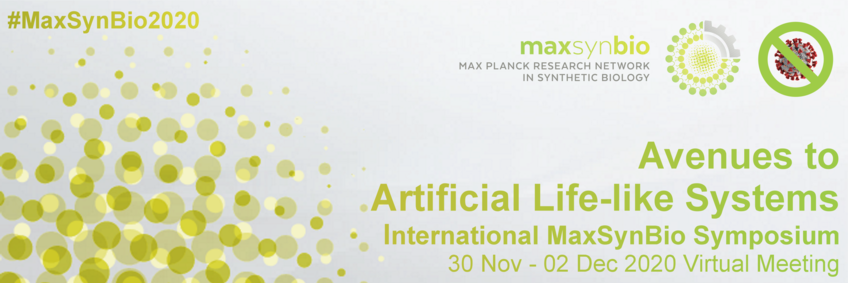
#28 - Multistimuli sensing adhesion unit for the self-positioning of minimal synthetic cells
Seraphine Wegner (Max Planck Institute for Polymer Research, Mainz / University of Münster)
Monday, 30 Nov 21:15 - 22:00 CET
Access to the BigBlueButton rooom for this Mini Talk via the lists for Monday and Tuesday.
Please make yourself familiar with BigBlueButton before you join the Mini Talk - read the instructions.
Abstract
Title: Multistimuli sensing adhesion unit for the self-positioning of minimal synthetic cells
Author(s): Dongdong Xua, Christin Kleinebergb, Tanja Vidaković-Kochb and Seraphine V. Wegnera,c
Affiliation(s): aMax Planck Institute for Polymer Research, Mainz, Germany; bMax Planck Institute for Dynamics of Complex Technical Systems, Magdeburg, Germany; cInstitute of Physiological Chemistry and Pathobiochemistry, University of Münster, Münster, Germany
Abstract: Cells have the ability to sense different environmental signals and position themselves accordingly in order to support their survival. Introducing analogous capabilities to the bottom-up assembled minimal synthetic cells is an important step for their autonomy. Here, a minimal synthetic cell which combines a multistimuli sensitive adhesion unit with an energy conversion module is reported, such that it can adhere to places that have the right environmental parameters for ATP production. The multistimuli sensitive adhesion unit senses light, pH, oxidative stress and the presence of metal ions and can regulate the adhesion of synthetic cells to substrates in response to these stimuli following a chemically coded logic. The adhesion unit is composed of the light and redox responsive protein interaction of iLID and Nano and the pH sensitive and metal ion mediated binding of protein His-tags to Ni2+-NTA complexes. Integration of the adhesion unit with a light to ATP conversion module into one synthetic cell allowed it to adhere to places under blue light illumination, non-oxidative conditions, at neutral pH and in the presence of metal ions, which are the right conditions to synthesize ATP. Thus, the multistimuli responsive adhesion unit allows synthetic cells to self-position and execute their functions.